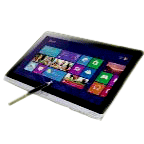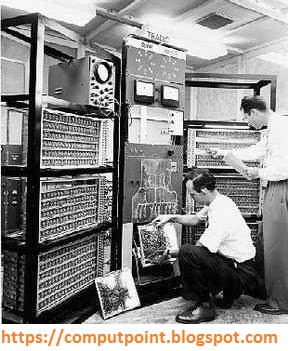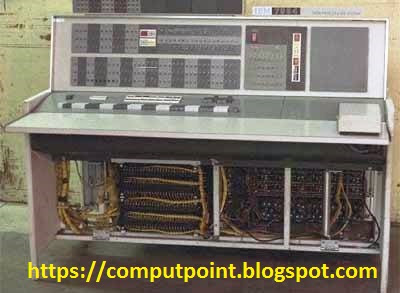Generations of a computer
But now a days, generations includes the hardware and software which is together make up an entire computer system. They are totally five computer generations now till date. So each generation has been discussed in detail along with their time period also.
➤The First Generation: The period of first generation was during 1946-1959, Vacuum tube based.
➤The Second Generation: The period of second generation was during 1959- 1965, Transistor based.
➤The Third Generation: The period of third generation was during 1965-1971, Integrated circuit based.
➤The Fourth Generation: The period of fourth generation was during 1971-1980, VLSI microprocessor based.
➤The Fifth Generation: The period of fifth generation 1980-on wards, ULSI microprocessor based.
➤ First Generation Computers (1946-1959)
The period of first generation computer was during in the 1946 to 1959. The first generation of computer used vacuum tubes as the basics components for memory and circuitry for CPU (Central Processing Unit).- The components which was used in first generation such as tubes, electronic bulbs that produced a lot of heat and were prone to frequent fusing of the installations.
- They were very expensive, large and slow which was offered only large organisations.
- In this generation only batch processing operating system were used as well as punched cards, paper tape, and magnetic tapes were used as a input devices.
- These computers were given instructions in machine language, which is composed entirely of the number 0 and 1. It is very difficult to work and hard to interpret.
- The vacuum tubes failed frequently, so the first generation of computers were down and not working much of the time.
Main features of first generations are:
- Vacuum tube technology
- Unreliable
- Supported machine language only
- Very costly
- Generated lot of heat
- Slow process
- Huge in size
- Need a air conditioner.
- Non portable.
- Consumed a lot of electricity.
Some of the computer this generation were:
1. ENIAC2. EDVAC
3. UNIVAC
4. IBM-701
5.IBM-650.
➤ Second Generation Computers (1959-1965)
The period of Second generation Computer was during in the year 1959-1965. This time break through in the computer world occurred in the second generation computers were large, unreliable vacuum tubes were replaced by transistors.
- Second generation computer were used that were cheaper, consumed less power, more compact in size, more reliable and faster than first generation computers.
- Transistors are small, require very little power and run efficiently.
- In this generation, Memory used on magnetic cores were used as primary memory and magnetic tape and magnetic disks as secondary devices.
- In this generation assembly language and high-level programming languages like FORTRAN, COBOL were used. This computers used batch processing and multiprocessing operating system.
- This generation computer had some problems. The input and output devices were so slow.
- Communication was fairly slow, but a new method of exchanging data and ideas was available.
- Uses of transistors.
- Reliable in comparison to first generation computers.
- Smaller size as compared to first generation computers
- Generated less heat as compared to first generation computers.
- Consumed less electricity as compared to first generation computers.
- Faster than first generation computers.
- Still very costly.
- A.C. needed.
- Supported machine and assembly languages.
Some computers of this generation were:
1. IBM 1620
2. IBM 7094
2. IBM 7094
3. CDC 160
4. CDC 3600
4. CDC 3600
5. UNIVAC 1108



No comments:
Post a Comment